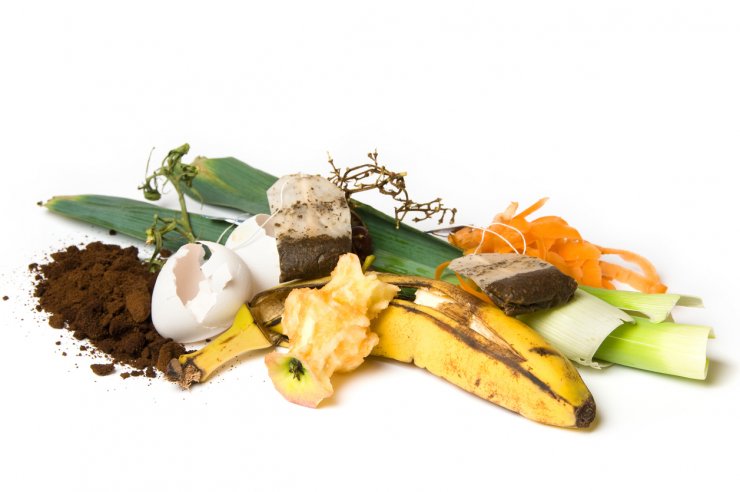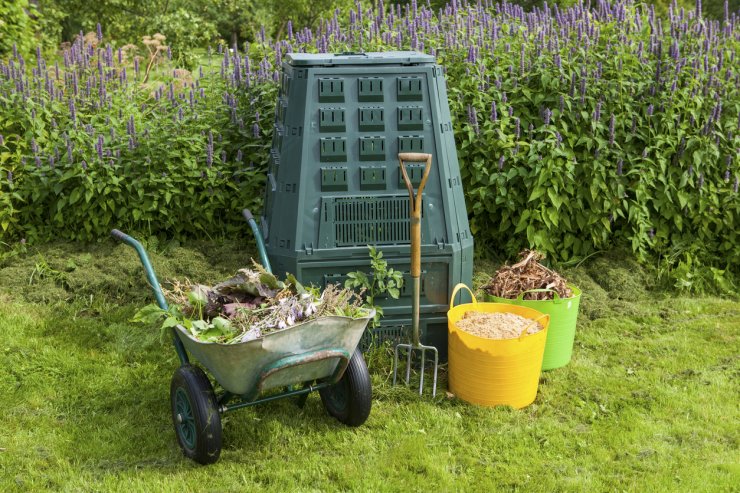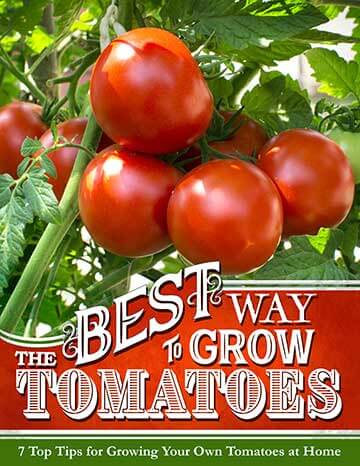
Compost
Before I started composting, I didn’t love the idea. I knew it would need to be far from the house to keep the gross out, like flies, smells, and rodents. And who is really going to bring their dinner out into the woods to compost? Well, as it turns out, we did, although it’s not as complicated as it sounds, and it doesn’t need to be in the next zip code to get the job done without spoiling your afternoon cookouts. It doesn’t even need to smell. In fact, learning how to make compost is probably one of the easiest parts of gardening. If you can lift the lid on your trash can to throw your food scraps out, you already know how to make compost. It’s really that simple.
Discover 7 top tips for growing, harvesting, and enjoying tomatoes from your home garden—when you access the FREE guide The Best Way to Grow Tomatoes, right now!
How to make compost: All the details you need (and some that are just for fun)
Before we get into how to make compost, let’s look at the reasons why we make compost. In one word: benefits. The first year I used compost in my garden, it was like someone had superpowered my plants. Everything grew bigger and healthier. Composting is also incredibly good for the environment for a variety of reasons, not the least of which is reducing landfill usage.
One common misconception is that compost is smelly. It can be. But not like you think. It’s really only smelly if your ratios are off (more on that in a minute). And if you use a closed container to compost, the only time you’ll smell much of anything is when you open the container to remove compost or add more materials.
The first part of learning how to make compost is learning what materials are compostable. The answer is easy: Almost any food scraps except for meats, oils, and dairy products. Egg shells, fruit pits, and coffee grounds are all good candidates. You’ll need a mix of these “green” materials, along with “brown” materials such as dead flowers, egg cartons, shredded newspaper, or dried grass.

Binned compost
Where you decide to compost may depend upon where you live. You can use an old trash bin or wooden chest or just a plain old corner of your yard. Just beware that even though a properly mixed compost pile won’t smell, it may take you a while to figure out the details, so you may not want to put it too close to anyone’s house. That could make for some unpleasant neighborly relationships if you’re composting for a city container garden.
Which brings us to the ratio and layers. There’s a simple secret for how to make compost that’s based on a few essential principles. You need the “greens” that supply nitrogen, the “browns” that supply carbon, a little bit of dampness to keep things moving, and enough airflow that the microbes can work.
Browns are old, dead things like twigs, straw, or plant materials from your garden after it dies. Greens are anything that still have greens in them like grass, fruit and veggie scraps.
Layers of brown then green are ideal—starting with a 50/50 mix. Some gardeners say a two-to-one ratio of brown:green works best, others reverse it. Test and determine what works best for your garden.
The last part is to turn your compost pile. The Department of Health says your compost should reach 131 degrees Fahrenheit first, then turn it or flip it once every 3 days for 15 days.
If you’ve created a good balance in your compost pile, you should have no issues with it heating up. This means all those microbes are working! Over the course of six to eight weeks, your compost will continue to “cook,” eventually giving you incredibly rich, nutritious spongy “soil” you can add to your garden.
And here’s the short version for learning how to make compost: Pile your vegetable waste on top of egg cartons and dried leaves, stir it once a week, and bingo, you have compost in a few months!
Have you made compost at home? What was your experience like? I’d love to hear your experience, and maybe learn a thing or two!
Discover 7 top tips for growing, harvesting, and enjoying tomatoes from your home garden—when you access the FREE guide The Best Way to Grow Tomatoes, right now!




